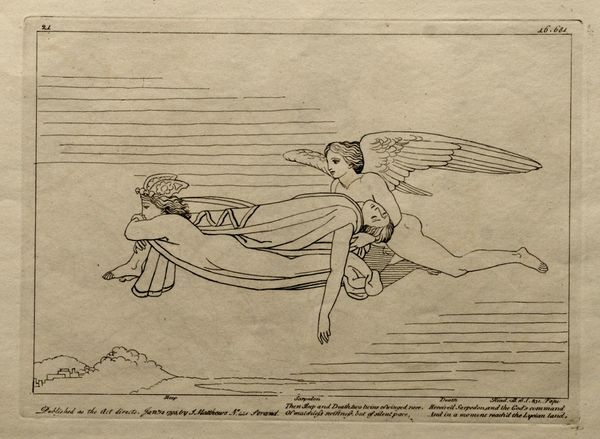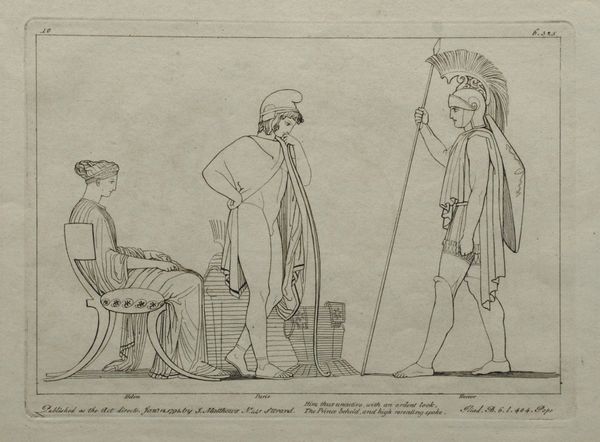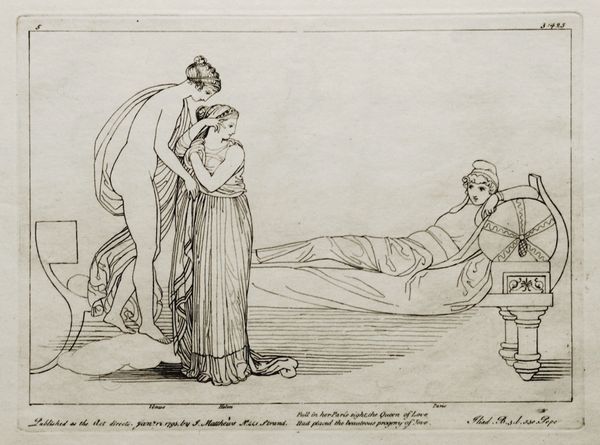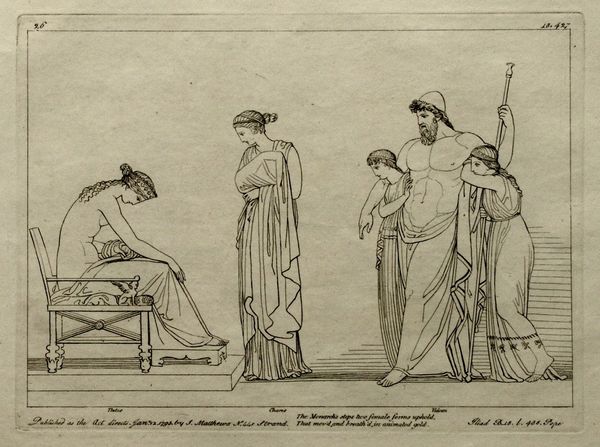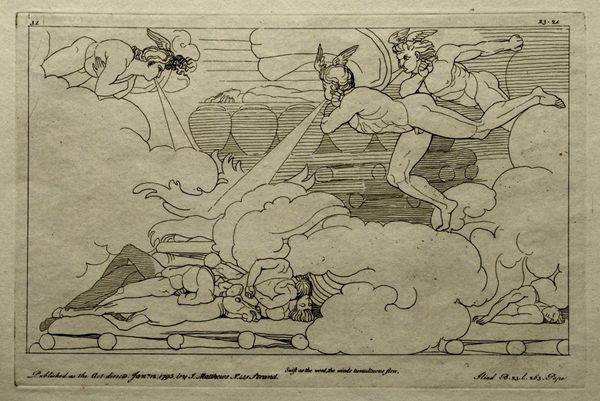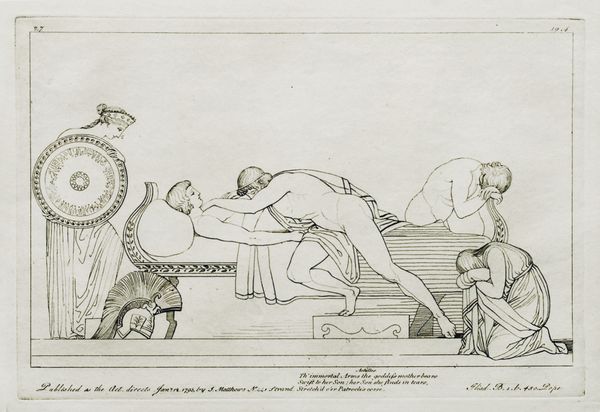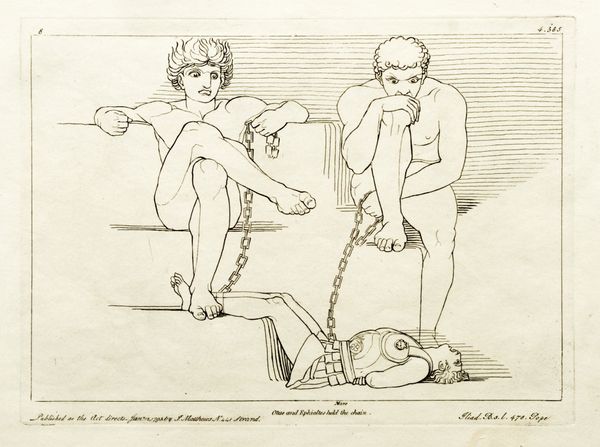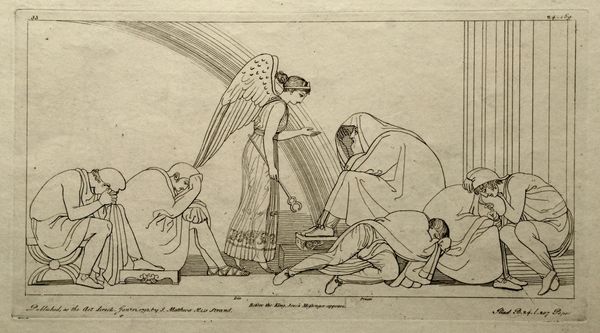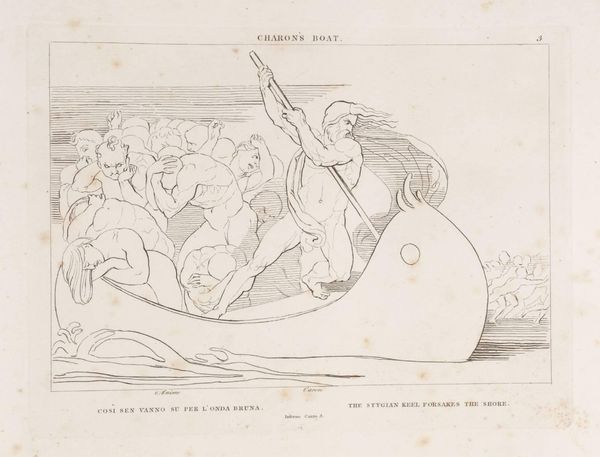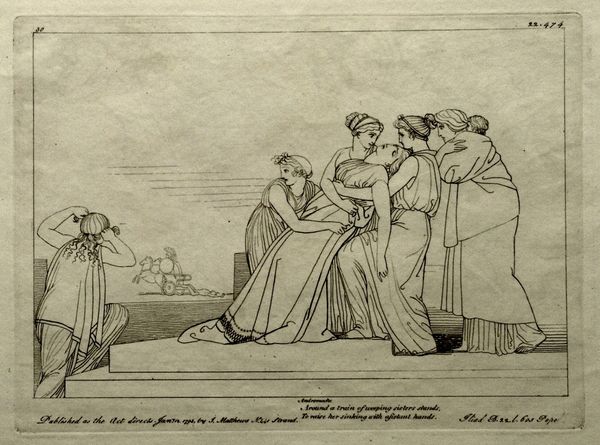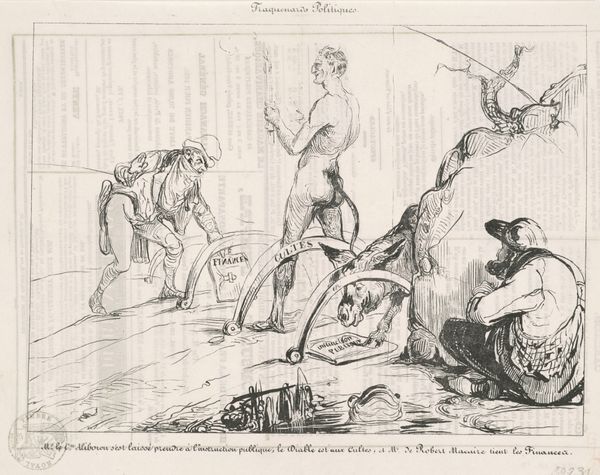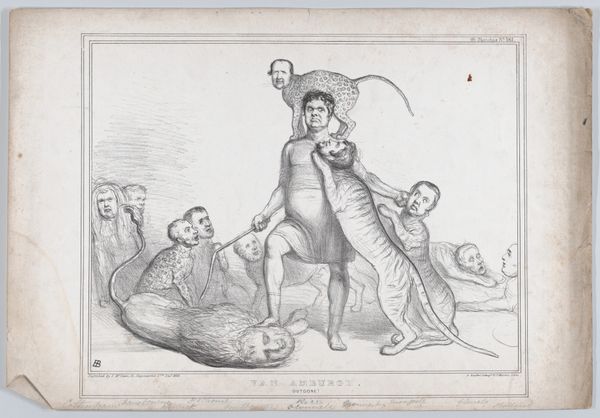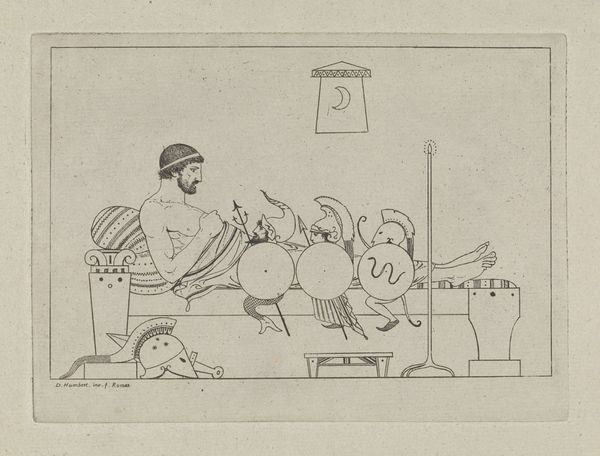
drawing, print, engraving
#
drawing
#
neoclacissism
#
aged paper
#
light pencil work
# print
#
pencil sketch
#
old engraving style
#
sketch book
#
figuration
#
personal sketchbook
#
sketchwork
#
line
#
sketchbook drawing
#
history-painting
#
storyboard and sketchbook work
#
nude
#
sketchbook art
#
engraving
Copyright: Public domain
Curator: Here we have John Flaxman’s 1795 engraving, “Illustration to the Iliad.” The scene depicts Thetis and the Nereids from Homer’s epic poem. What is your initial impression? Editor: My first impression is one of serene grief. The figures are rendered in such delicate lines, it’s almost as if the scene is a memory, softly etched and distant. The mood is somber yet classically elegant. Curator: It is a powerful image. Flaxman, a key figure in the Neoclassical movement, was deeply influenced by ancient Greek art and sought to revive its aesthetic principles. Considering the context of late 18th century Europe, how might this idealized form relate to contemporary political and social tensions? Editor: This work presents the cultural weight carried by female figures in Homer's tale: the nymph Thetis appears dignified despite the heavy burdens placed upon her as Achilles' mother, the immortal being faced with his mortality. Here, the symbols of water, of femininity, and of loss become interlaced with broader explorations of destiny. Curator: Precisely. The simplified lines and emphasis on form are in line with Neoclassical ideals, but also arguably contribute to a universalising of the female body, particularly with the figures displayed nude. Flaxman stripped away what he likely perceived as Baroque excess, offering instead this linear purity, this idealized return. But what about the narratives silenced by that simplification? Where does the labor of enslaved people or the reality of class stratification in ancient Greece fit into such a rarefied portrayal? Editor: Indeed, while the drawing leans toward timelessness, the stark linearity allows for the conveyance of specific virtues through symbols. Neoclassicism often utilized this precise method in its referencing of antiquity: it allowed both artists and their audience to imbue the piece with particular moral interpretations. It serves as both tribute to the cultural impact of the *Iliad* while operating as a site of contemporary virtue. Curator: The work engages with timeless narratives, using its form to project specific cultural and moral viewpoints which can reveal a tension between history and interpretation, presence and absence. Editor: Exactly, it shows the layers of meaning we bring to, and draw from, these iconic images. The art serves as a focal point to recognize that our modern perceptions continue to influence readings of the *Iliad*.
Comments
No comments
Be the first to comment and join the conversation on the ultimate creative platform.
